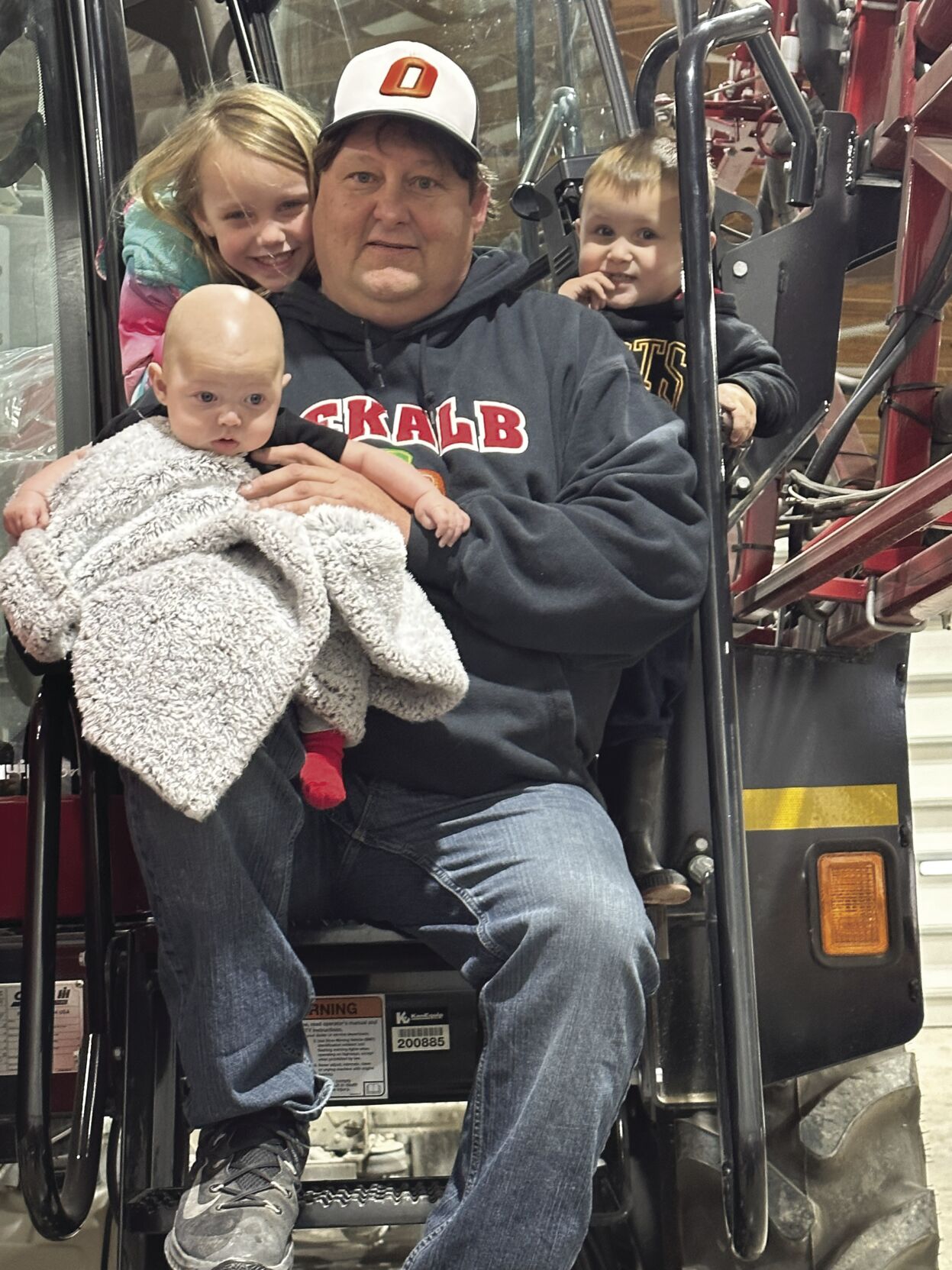2022 was a tough year for many corn growers due to lack of moisture, but producers like Jeff Koelzer in Onaga, Kansas, still managed to produce high-yielding crops and top the state’s yield contest results. Koelzer was the over-all dryland winner with 308.96 bushels per acre with Dekalb DKC65-84RIB.
In 2021, the state-level yield contest and the National Corn Yield Contest were combined, making the competitions even more competitive. The state contest awards dryland and irrigated winners in ten districts, along with one statewide dryland and irrigated winner. The winners were recognized at the recent Kansas Corn Symposium in Salina, Kansas. The Kansas Corn Yield Contest is sponsored by Kansas Corn and Kansas State University Research and Extension.
Koelzer is no stranger to yield competitions. He entered his first national contest in 2009 and has been hooked ever since. In fact, in 2020 he had the top overall yield from the strip, min, mulch, ridge-till non-irrigated category with a 323-bushel-per-acre crop. That was his highest yield to date and he missed out on third place recognition at the national level by a bushel and half. For 2023, Koelzer said he is striving to top his personal best and place in the national contest.
“That is my goal and even if it’s third place I would be very happy with that,” he said.
Koelzer works alongside his father and two brothers on their family farming operation, which is located on the edge of the Flint Hills and stretches across Pottawatomie, Nemaha and Marshall counties. Their farm ground is 100% dryland with a 50-50 rotation between corn and soybeans.
“All our contest corn is planted after soybeans because it frees-up the nitrogen from the bean crop and it’s easier for root structure to develop,” he said.
Additionally, the Koelzers run 500 cows in their cow-calf operation on hay brome and native grasses. Jeff Koelzer said the part of Kansas where he is located at is fortunate to receive sufficient rainfall, averaging about 34 inches per year.
“Northeast Kansas hasn’t really been short of moisture the last three years and we haven’t really had a bad crop,” he said. “In 2022 we had adequate or normal rainfall until the last week in July and the first week in August, and then it never rained. I think the biggest reason we had the yields we had was we planted super early. I like to start planting around April 15, and last year we were done before Easter Sunday and had every acre in the ground.”
This allowed the corn plants to utilize the spring moisture and withstand the summer heat. However, his 2022 yields were decreased from his 2021 contest yield of 320 bushels per acre. Looking toward the future, Koelzer is anxious but also excited about challenging himself to transition to 118-day, full-season corn. He is nervous because if he is unable to get the seed in the ground soon enough it will be difficult for it to dry down in a timely manner.
An attitude of improvement
Koelzer enjoys competing in yield contests because he loves the challenge of trying to outdo himself and his peers and push the envelope with his farm and production.
“We’re a pretty competitive farm and I really enjoy competing,” he explained. “When we cut the contest crop, I need all day to harvest it with one combine and it’s lots of fun.”
For contest corn, Koelzer applies three times the amount of fertilizer that he would normally apply to an acre of his corn crop. Koelzer partially credits a couple management techniques that have given him a leg up with his corn in recent years.
“The last three years we have been aerial applying urea and I think that last 40 pounds of actual is where we get our biggest bang for our buck,” he explained. “It’s right there and it can’t leach away and it’s just so readily available. I think that’s the practice that can pay off the most dividends, but we also treat all of our anhydrous with stabilizers. We get wet up here, so leaching is a bigger concern than what some might think.”
Koelzer also praises seed companies that have put a lot of emphasis on developing western hybrids that have been very successful in the High Plains.
“They’re taking Kansas, Oklahoma, Colorado and almost making us into corn states,” he said. “We’re never going to be Iowa or Illinois, but I think Kansas has some wonderful dirt and great farmers.”
Growers like Koelzer, who set goals and challenge themselves to improve their farming practices and yields, have adopted the mindset needed to ensure the future of family farms and the world’s food supply.
Lacey Vilhauer can be reached at 620-227-1871 or [email protected].
Sign up for HPJ Insights
Our weekly newsletter delivers the latest news straight to your inbox including breaking news, our exclusive columns and much more.



